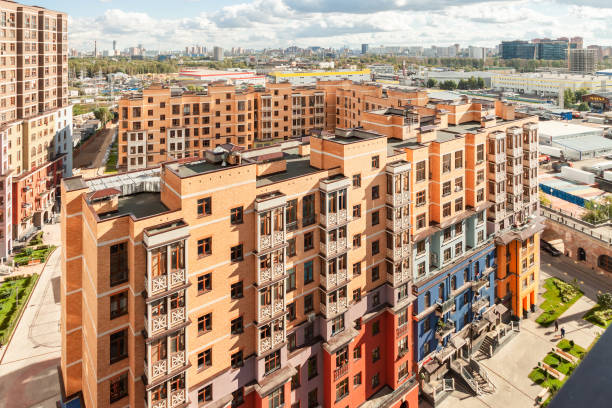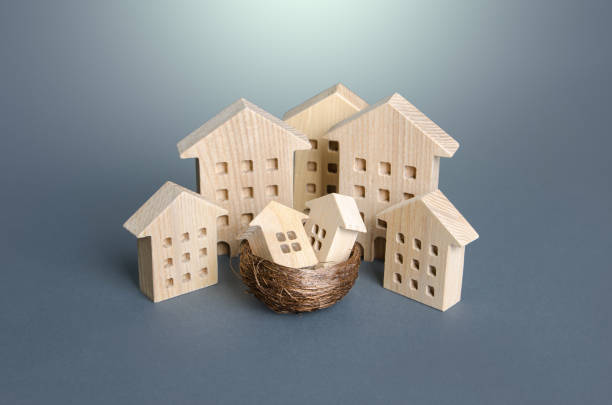What Is a Multi-Family Housing? Everything You Need to Know

Multi-family housing is an essential part of the real estate market, providing housing solutions for multiple families within a single property. Whether you’re an investor looking to expand your portfolio or a homebuyer considering a shared living space, understanding the ins and outs of multi-family housing is crucial. This article will explore what multi-family housing is, how it differs from single-family housing, its types, advantages and disadvantages, and investment potential.
What Is Multi-Family Housing?
Multi-family housing refers to a residential property designed to accommodate multiple separate living units under one roof or within a single complex. Each unit typically has its own kitchen, bathroom, and living space, making them functionally independent while sharing the same overall structure. Common examples include duplexes, triplexes, apartment buildings, and condominiums.
Multi-family housing can serve as an investment opportunity for landlords looking to generate rental income. Some owners choose to live in one unit while renting out the others, a strategy known as “house hacking.” This approach helps offset mortgage payments and provides financial flexibility. Additionally, multi-family properties often appreciate over time, making them an attractive long-term investment option.
Multi-Family vs. Single-Family Housing: Key Differences
When comparing multi-family housing to single-family housing, several distinctions stand out:
Occupancy
Single-family homes house one family, while multi-family homes accommodate multiple families.
Investment Potential
Multi-family properties often generate rental income from multiple units, whereas single-family homes rely on a single tenant or owner.
Maintenance Costs
While multi-family homes may have higher upkeep costs, expenses are often offset by rental income.
Financing
Lenders typically view multi-family housing as commercial property if it has more than four units, affecting mortgage terms and rates.
Resale Value
Single-family homes appeal to a broader market, whereas multi-family properties cater primarily to investors.
Scalability
Multi-family housing allows investors to scale their rental portfolio faster than buying individual single-family homes.

Types of Multi-Family Housing Explained
Multi-family housing comes in various forms, each catering to different needs and budgets. Here are the most common types:
Duplex
A property with two separate living units sharing a common wall. Each unit may have its own entrance, or they may share a main entryway.
Triplex and Fourplex
Similar to a duplex but with three or four units, offering increased rental income opportunities.
Apartment Buildings
Multi-story buildings with multiple units for rent. These range from small complexes with a handful of units to large high-rise buildings with hundreds of apartments.
Condominiums
Individually owned units within a larger complex. Condo owners share common areas like hallways, gyms, and pools.
Townhouses
Multi-floor homes that share walls with adjacent units but have separate entrances. These properties provide more privacy than apartments but still offer shared amenities.
Co-Living Spaces
These are shared housing arrangements where tenants rent individual rooms while sharing common spaces like kitchens and living rooms. Co-living is becoming popular in urban areas for affordability and community-oriented living.
Mixed-Use Buildings
Some multi-family properties include retail or office spaces on the ground floor, combining residential and commercial elements for added investment opportunities.
What to Consider Before Buying Multi-Family Housing
Purchasing a multi-family property requires careful planning and analysis. Consider these key factors:
-
Location: Proximity to schools, businesses, and public transportation affects tenant demand and rental income potential.
-
Market Demand: Research rental trends, vacancy rates, and population growth in your target area to assess profitability.
-
Property Management: Consider whether you will self-manage or hire a property manager. Managing multiple units can be time-intensive.
-
Financing Options: Explore loan types, interest rates, and down payment requirements. Some investors use FHA loans for properties with up to four units.
-
Legal Considerations: Understand zoning laws, landlord-tenant regulations, and eviction procedures.
-
Property Condition: Conduct thorough inspections to identify potential repair costs before making a purchase.
-
Future Appreciation: Look into long-term growth potential in the area to ensure your investment will increase in value over time.

Pros and Cons of Multi-Family Housing
Pros:
-
Higher Rental Income: Multiple units generate multiple streams of revenue, providing more financial stability.
-
Easier Financing: Lenders often see multi-family housing as a lower risk due to steady rental income, especially for properties with four or fewer units.
-
Tax Benefits: Owners can take advantage of deductions on depreciation, mortgage interest, and maintenance expenses.
-
Scalability: Investing in one building with multiple units can be more efficient than managing several single-family homes.
-
Lower Risk of Complete Vacancy: If one unit becomes vacant, rental income from other units can help cover expenses.
-
House Hacking Potential: Owners can live in one unit while renting out the others to cover mortgage payments.
Cons:
-
Higher Upfront Costs: Purchasing a multi-family property typically requires a larger initial investment compared to single-family homes.
-
More Responsibilities: Managing multiple tenants requires more time and effort, including addressing maintenance issues and potential disputes.
-
Increased Maintenance: More units mean more repairs and upkeep, which can be costly over time.
-
Tenant Turnover: High tenant turnover can result in vacancies and increased operational costs.
-
Stricter Regulations: Some areas have rent control laws or zoning restrictions that impact rental profitability.
Should You Invest in Multi-Family Housing?
Multi-family housing can be a lucrative investment, especially for those looking to generate passive income. However, it requires careful planning, financial assessment, and property management skills. If you’re new to real estate investing, consider starting small with a duplex or triplex before scaling up.
Successful investors analyze market trends, network with experienced property owners, and use professional management services when necessary. Multi-family investments can build long-term wealth, but they require strategic decision-making and consistent oversight.

Conclusion
Multi-family housing offers diverse opportunities for homeowners and investors alike. Whether you’re looking for a steady rental income, a multi-unit living arrangement, or long-term property appreciation, multi-family properties can be a great addition to your real estate portfolio.
(Dwanderful is a real estate investor and a podcast host. At Dwanderful, Dwan offers valuable resources to aspiring and seasoned investors. You can get her free book, “Real Estate Lingo,” or dive deeper into investment strategies with her paid book, “Five Pillars of Real Estate Investing.” Plus, take the quick quiz to discover how you could generate six figures in the next six months—whether you’re buying your first property or your next. It takes less than a minute!) Contact us now!
Frequently Asked Questions
How does financing work for multi-family housing?
Financing for multi-family housing depends on the number of units. Properties with up to four units qualify for residential loans, while those with five or more units require commercial financing. Investors can explore conventional mortgages, FHA loans, VA loans (for eligible buyers), and portfolio loans.
What are the common challenges of owning multi-family housing?
Some challenges include property maintenance, tenant turnover, legal compliance, dealing with difficult tenants, and the complexity of managing multiple rental units. Additionally, some municipalities impose strict regulations that landlords must follow.
How do you manage tenants in a multi-family property?
Effective tenant management involves setting clear lease terms, conducting thorough tenant screenings, maintaining open communication, and addressing maintenance issues promptly. Hiring a property management company can also help streamline operations and reduce landlord stress. Offering amenities and competitive rent prices can also help retain quality tenants.


